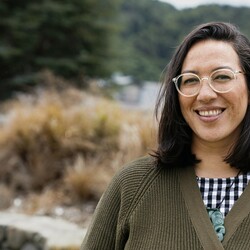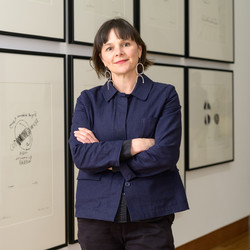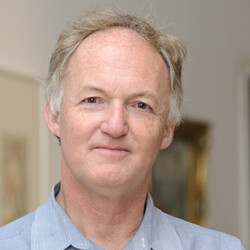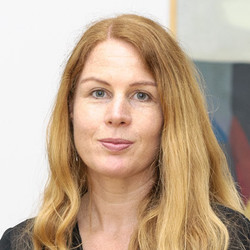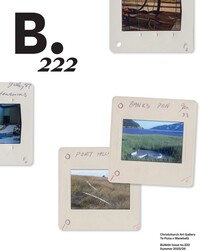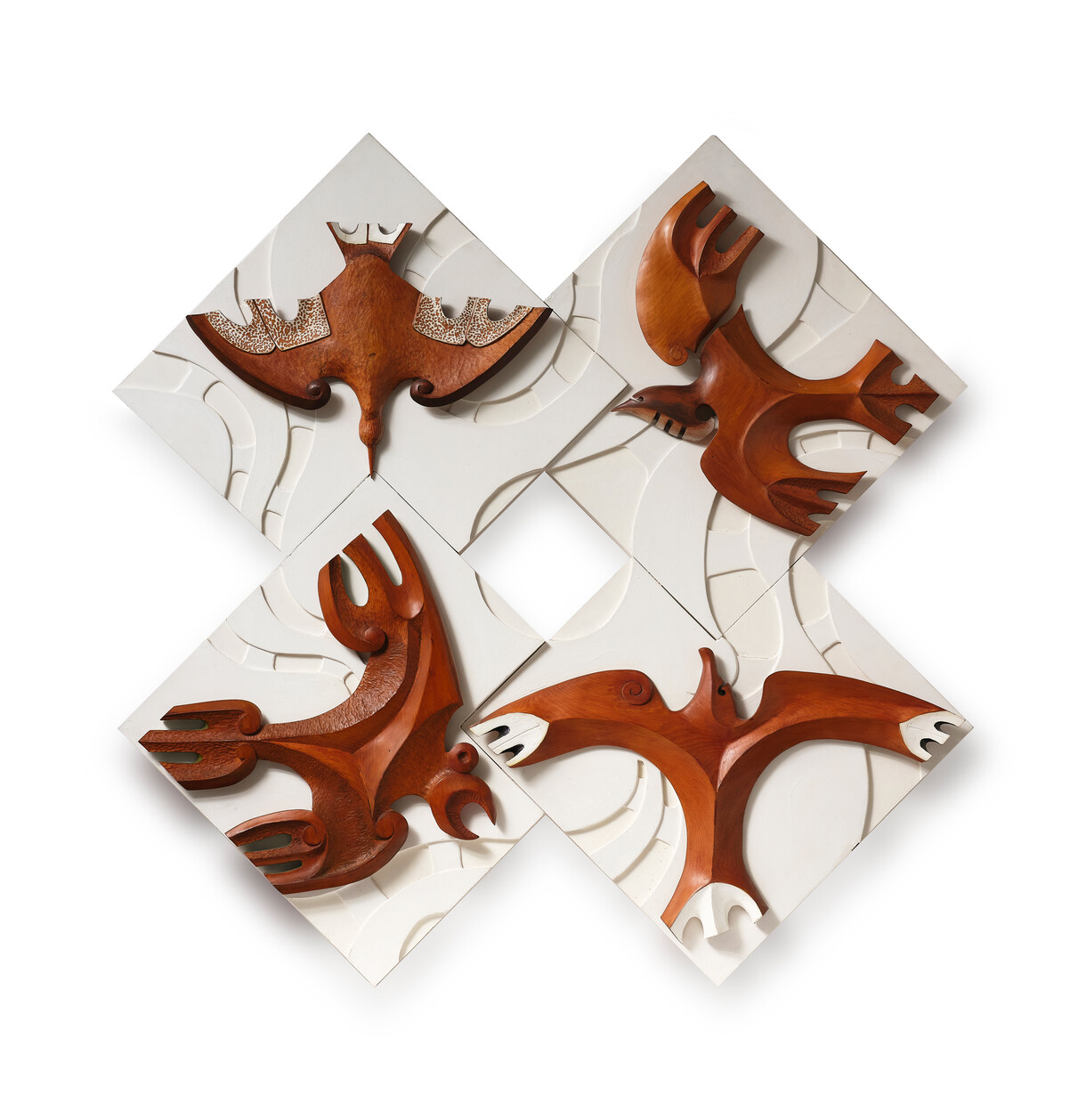Rooted in the Land
Toi Whakaata / Reflections and Fred Graham’s Public Sculptures
![Fred Graham Rangi me Papa (detail [Papatuanuku]) 1987. Steel, stone, marble. Te Kopa Iti Ara Artwork Collection](/media/cache/6a/84/6a8452966d667d00c6777d1a89b53294.jpg)
Fred Graham Rangi me Papa (detail [Papatuanuku]) 1987. Steel, stone, marble. Te Kopa Iti Ara Artwork Collection
This article was written prior to the passing of Fred Graham on 9 May 2025. The author, Te Uru Contemporary Gallery and Christchurch Art Gallery acknowledge this loss with deep sadness. Moe mai rā e te Rangatira.
In 2024 I was fortunate to work with senior Māori artist Fred Graham (Ngāti Korokī Kahukura, Tainui) and his whānau to present Fred Graham: Toi Whakaata / Reflections at Te Uru Contemporary Gallery in Tāmaki Makaurau Auckland. Reflecting on Graham’s career, the exhibition brings together works made over the course of almost fifty years between 1965 and 2013.
“The positive public reception of this work led to further significant commissions, and meant that from 1990 Graham was able to sculpt full-time.”
Toi Whakaata / Reflections emphasises the artist’s smaller-scale sculptures, but also highlights his ability to move deftly between these more intimate pieces and large public sculptures. One such work is Rangi me Papa (1987) which is usually on display at Ara Institute of Canterbury’s city campus in Ōtautahi Christchurch, but has been incorporated into the exhibition’s second iteration at Te Puna o Waiwhetū Christchurch Art Gallery. This commanding relief sculpture anchors the exhibition to its new surroundings, evoking the braided rivers and snowy peaks of Waitaha Canterbury.
While most of Graham’s public works are not physically present in Toi Whakaata / Reflections, they are on permanent display in buildings, parks and city streets throughout Aotearoa. They function as satellites to the exhibition, informing the understanding of Graham’s more intimate sculptures and his practice as a whole. Major sculpture commissions have played an important role in the trajectory of Graham’s career. His first large-scale commission was from the New Zealand Shipping Corporation and resulted in the eight-metre long Four Winds and Seven Seas (1985). A focal point of Toi Whakaata / Reflections, it consists of nine interlocking diamond-shaped panels with carved wooden koru representing different parts of the globe. The positive public reception of this work led to further significant commissions, and meant that from 1990 Graham was able to sculpt full-time.
Graham was born in 1928 and raised in Horahora, an ancestral papa kāinga at the centre of Ngāti Korokī Kahukura territory. He went to high school in Kirikiriroa Hamilton and began studying at Ardmore Teachers’ Training College in 1948. In 1950 Graham spent a year at Dunedin Teachers’ College specialising in art, having been selected to be part of Gordon Tovey’s innovative programme of Māori arts and craft advisors in primary schools. He worked as an arts advisor in Rotorua and Te Tai Tokerau Northland before going on to teach art at secondary and tertiary levels throughout Te Ika-a-Māui North Island. Graham’s interest in sculpture developed in addition to his drawing and painting practice while lecturing in art at Palmerston North Teachers’ College between 1957 and 1962. During the 1960s he regularly met and exhibited with other Māori artists, including fellow arts advisors Ralph Hotere and Cliff Whiting, who shared his interest in contemporary Māori art. They were the first generation of Māori artists to formally engage with the conventions and styles of Western fine art, combining these with foundations of customary Māori art practice, such as simplicity of shape and form, and the relationship between positive and negative space.1

Fred Graham Tainui 1998. Swamp kauri. Collection of Waikato Museum Te Whare Taonga o Waikato. Courtesy of the artist and Te Uru. Photo: Sam Hartnett
“I stood still and took in the work, while shoppers and office workers rushed around me.”
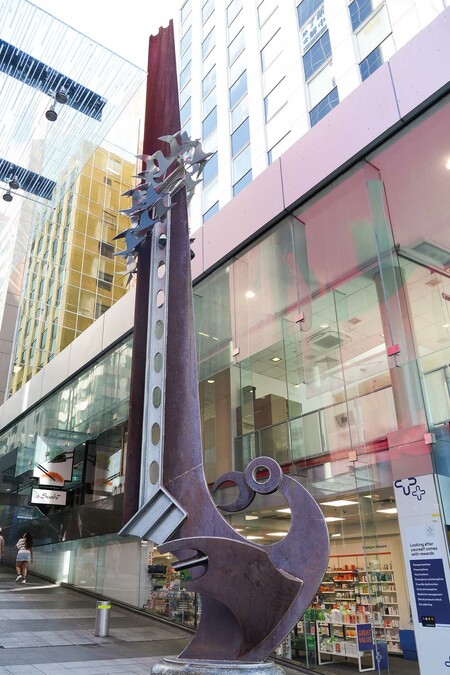
Fred Graham Te Waka Taumata o Horotiu 2008. Steel on concrete base. Auckland Council Art Collection. Photo: Arabella Deane
Māori imagery, simplified organic forms, and references to Aotearoa’s history are defining features of Graham’s work, along with the use of a mix of traditional and contemporary materials. People, place and history are key considerations across Graham’s practice in both small and large-scale pieces. This is particularly evident in his public sculptures, where the history of a site often defines the work that is produced. Today there are over twenty of his public sculptures across Aotearoa, with the highest concentration in Tāmaki Makaurau. The works are prominently located throughout the city, including at the High Court, Pukekawa Auckland Domain, Queen Street and the entrance to the Botanic Gardens. In the early development stages of Toi Whakaata / Reflections I made a pilgrimage to three, wanting to stand in the presence of these works and feel their power in the context of their surroundings.
My first stop was Te Waka Taumata o Horotiu (2008) on the corner of Queen and Swanson streets in the heart of the city. I stood still and took in the work, while shoppers and office workers rushed around me. Te Waka Taumata o Horotiu marks the original foreshore and waka landing site for Ngāti Pāoa and Ngāti Whātua in the eighteenth century.2 Graham’s earlier wooden sculpture Tainui (1998) was the basis for this work, and features in Toi Whakaata / Reflections. Both sculptures combine the tauihu and taurapa of a waka taua. Wings on either side echo the hands-on-hips posture of the ancestral figures traditionally carved at the base of taurapa on waka taua.3 The simplified metal birds encircling the taurapa of Te Waka Taumata o Horotiu have appeared in a number of Graham’s works over the years. Toi Whakaata / Reflections highlights one of the earliest examples of this motif in Untitled (Te Ika-a-Māui) (c.1965). The carved wooden relief evokes the story of Te- Ika-a-Maui North Island, with the life that now populates the island represented by the copper silhouette of a bird in flight.
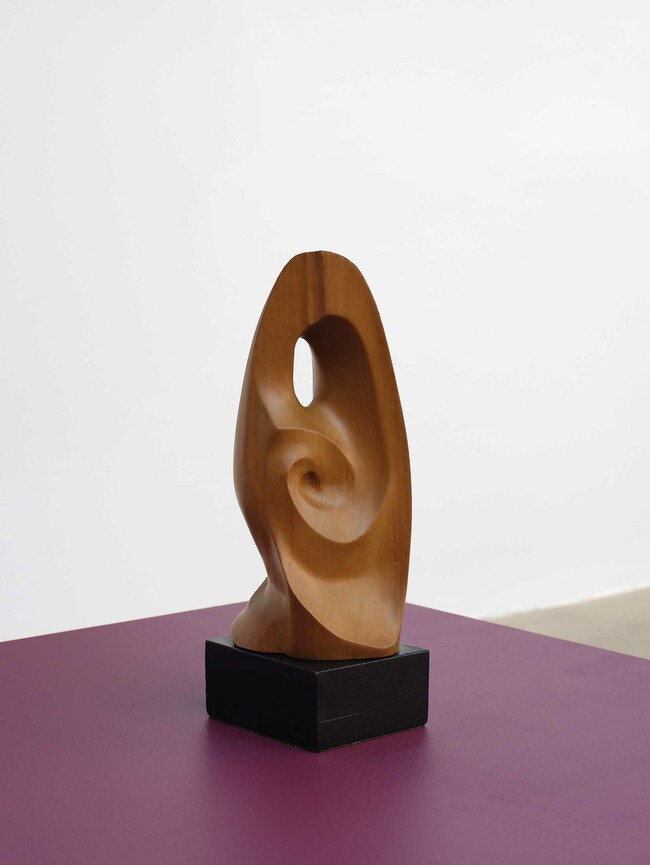
Fred Graham Growth 1968. Tōtara. Private collection, Tāmaki Makaurau Auckland. Courtesy of the artist and Te Uru. Photo: Sam Hartnett
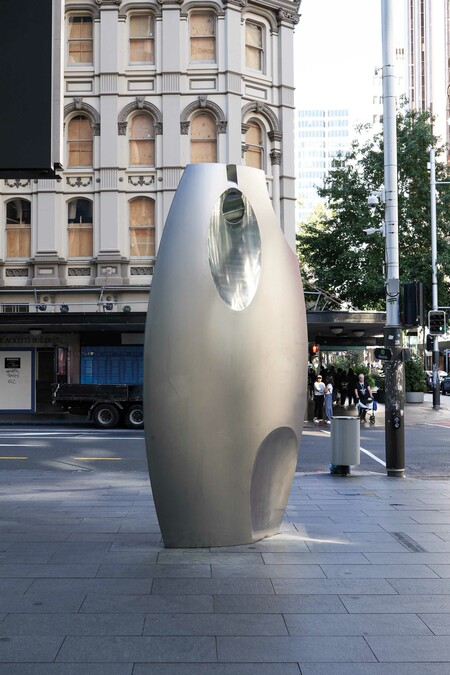
Fred Graham Kaitiaki II 2009. Steel. Photo: Arabella Deane
Almost directly opposite Te Waka Taumata o Horotiu, on the corner of Queen and Shortland streets, is a second major commission acknowledging the historic foreshore. Kaitiaki II (2009) is a solid metal form with curved sides and a hole pierced through the top representing an anchor stone. It has many similarities to an earlier work, Growth (1968), included in Toi Whakaata / Reflections. This intimate sculpture is carved from tōtara and is only a tenth of the size of Kaitiaki II but has a similar rounded form with a hole at the apex. This space allows light to pass through the work, evoking Te Ao Mārama coming into being through the separation of celestial parents Ranginui and Papatūānuku in Māori creation stories.

Fred Graham Te Ata 2011. Kauri and stone.
Collection of the artist. Photo: Sam Hartnett
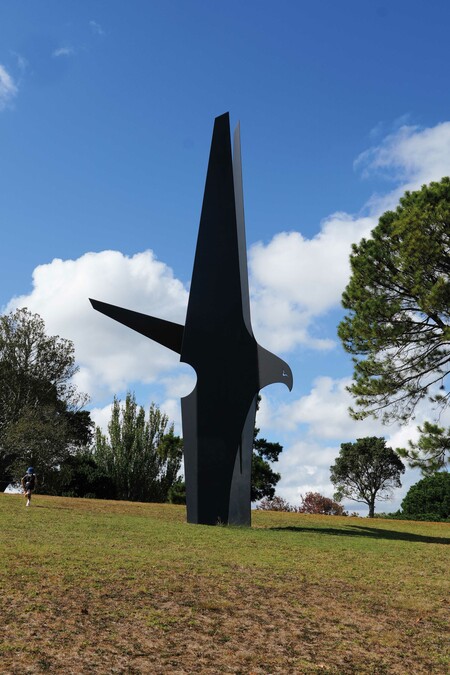
Fred Graham Kaitiaki 2004. Steel. Collection of the Edmiston Trust, Auckland Domain. Special thanks to Rex Erikson. Produced with assistance from the New Zealand Lottery Grants Board Millennium Fund. Photo: Arabella Deane
The third and final stop on my pilgrimage was Kaitiaki (2004) in Pukekawa Auckland Domain. It is a kāhu in flight reduced to its essential elements. Fabricated from steel and measuring almost twelve metres, the sculpture cuts a striking silhouette against the sky. The soaring black bird embodies descriptions of Ngāti Whātua chiefs as black hawks.4 The name Pukekawa means ‘hill of bitter memories’ and refers to various hard-fought battles between Ngāti Whātua and Ngāpuhi.5 Birds are a central motif in Graham’s work and appear in numerous sculptures in Toi Whakaata / Reflections, speaking to the artist’s Tainui whakapapa, the pursuit of knowledge, and his fascination with the aero- dynamics and unfettered nature of birds. A small wooden sculpture, Te Ata (2011), shares the sleek black finish and bowed head of Kaitiaiki. Te Ata is an interpretation of a taonga, Korotangi, which is said to have come to Aotearoa aboard the Tainui waka. The title is a play on words, as this sculpture is both an ata, or reflection, of the original and a homage to Te Arikinui Te Atairangikaahu (1931–2006), the Māori Queen, who Graham knew from his teenage years.
Fred Graham’s large-scale public sculptures are some of his best-known works and are seen by thousands of people every day. Toi Whakaata / Reflections acknowledges their importance to Graham’s practice, creating a dialogue between the pieces in the exhibition and those in public spaces throughout Tāmaki Makaurau. The public sculptures highlight Graham’s consistent attention to place when making work, and his consideration of the history of the site and the wider environment.6 When I asked Graham’s son, prominent contemporary artist Brett Graham, about the lasting impact of his father’s public works, he put it best: Now when briefs go out for public sculptures in New Zealand there is often a requirement to consider the history of the site and the local iwi. This was never the case when most of his works were made. Māori contemporary artists made visible an indigenous landscape that was buried under layers of colonial infrastructure and buildings, and seldom acknowledged. For all of his works this is the first port of call, acknowledging this depth of history. This is his legacy.7
koru – spiral motif
papa kāinga – home base
Ngāti Korokī Kahukura – tribal group of the Maungatautari area
Waka – canoe
Ngāti Pāoa – tribal group of area west of the Hauraki Gulf
Ngāti Whātua – tribal group of the area from Kaipara to Tāmaki-makau-rau
tauihu – bow figurehead
taurapa – sternpost
waka taua – war canoe
Te Ao Mārama – the world of light and life
Ranginui – sky father
Papatūānuku – earth, earth mother
kāhu – hawk
Ngāpuhi – tribal group of much of Te Tai Tokerau Northland.
Tainui – crew of this canoe from Hawaiki are claimed as ancestors by tribes of the Waikato, King Country and Tauranga areas
whakapapa – genealogy, lineage, ancestry
